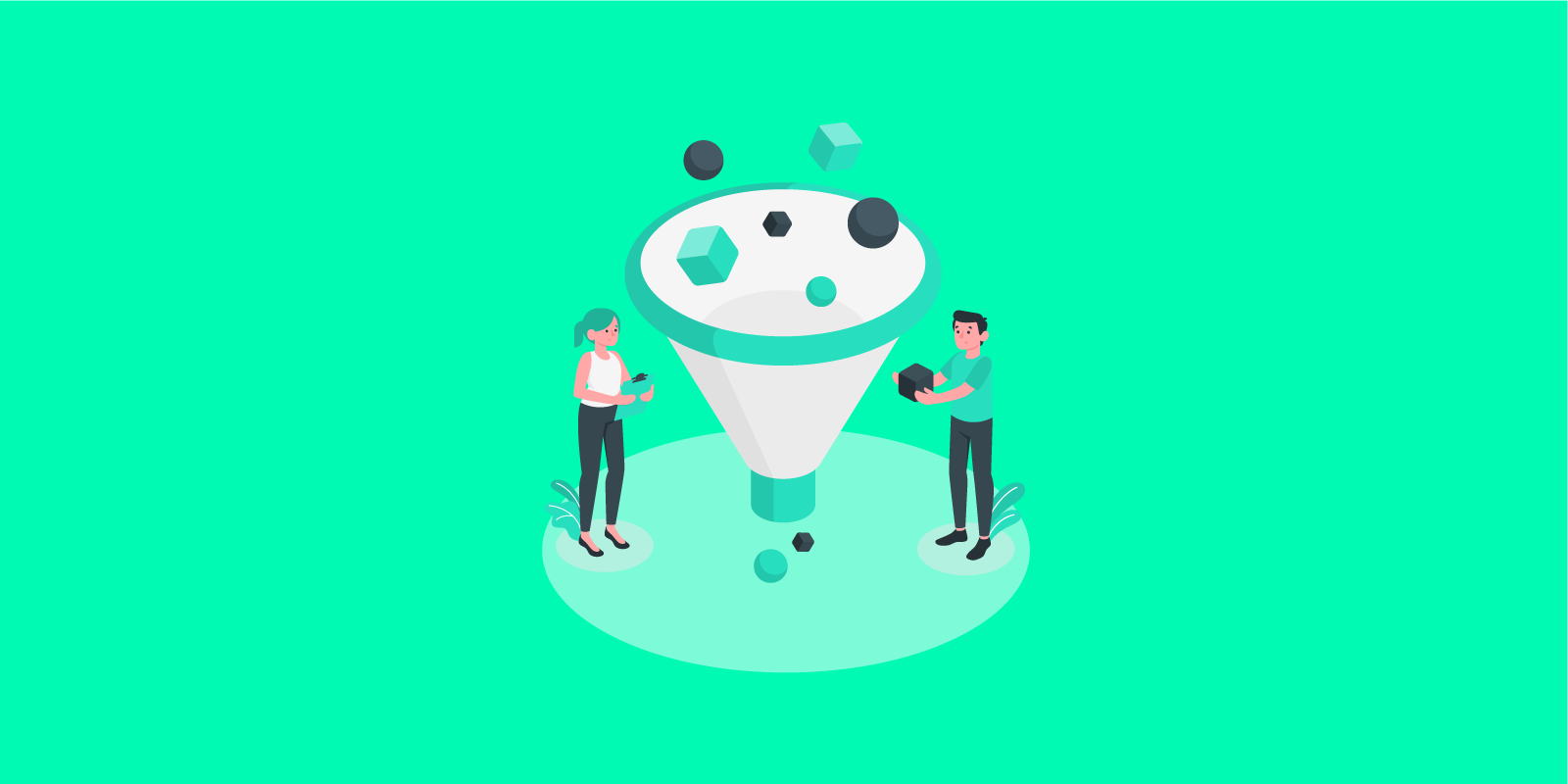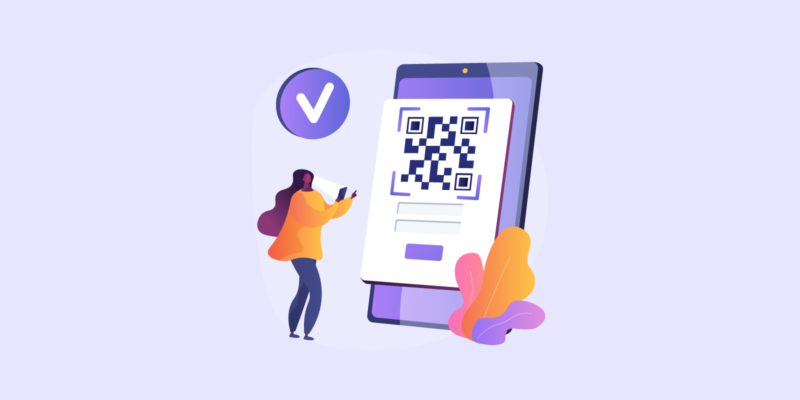If you want your business’ growth to follow the upward curve with time, you must get your marketing funnel – the process of converting a browser or visitor into a paying customer – right.
Attracting new leads is extremely crucial when aiming to target growth in business. However, getting leads is really only the tip of the iceberg when it comes to generating new business opportunities.
As a business owner, it’s important that your marketing efforts not only generate qualified leads, but also move those leads through the sales cycle smoothly. Every customer your business comes upon has to go through some type of marketing funnel.
This is exactly where having an optimized marketing funnel comes into play.
In this article
Five Stages of the Marketing Funnel
No matter what kind of purchase customers are making or how much they plan on spending, all of them follow a fairly identical path when it comes to deciding what to buy. This process, or the different stages it is composed of, was first introduced by John Dewey in 1910, but even now — more than an entire century later — it still is the ultimate basis of comprehending buyer behavior and marketing funnel creation.
The five primary stages of the marketing funnel are as follows:
Stage 1: Need Recognition
Clearly, if a person doesn’t recognize that they have a need that must be fulfilled, they aren’t going to make a purchase in the first place. That said, identifying these needs and positioning them in a way that makes the lead ask for more can range from problems that can be solved easily to issues without clear solutions.
For different types of businesses, buyer needs at the need/problem recognition stage – top of the funnel (TOFU) – are going to be unalike.
If you’re running a consulting business, for instance, your clients already realize that they’re having certain problems around your service area – like disorganized spending (if you’re in accounting) or a high cost per lead (if you’re in marketing). On the other hand, if you’re running a software development business, your client could be having problems with absolutely anything right from the hours being consumed to other factors that affect deliveries.
Stage 2: Information Search
Identifying an issue or need that your potential customer might have is the step that sets off a search for more information. The approaches used to gather information tend to differ based on the scope and size of the purchase.
According to one recent study published by Pardot, 70% of buyers turn to Google at least 2-3 times during their search to find out more about their requirements, potential solutions, companies offering those solutions, etc. Many people also turn to public forums and social media platforms for recommendations. At this point, they aren’t looking for promotional content; they’re only looking to learn more about potential solutions.
Here’s where you can position yourself as the industry expert they’re seeking with content that helps them. Try doing some keyword research to figure out what types of content you should be creating for the middle of the funnel (MOFU) audiences — you can find out which search terms in your niche attract high volumes of traffic and create content around those queries later.
This content can be presented in the form of an article, using an infographic maker or blog post on your website, or a comprehensive answer to a query posted by a lead on some public forum such as Quora.
Stage 3: Evaluation of Alternatives
Following their information search — or sometimes running in concurrence with this process — leads start comparing the options that you might have presented before them in any of the above discussed consumable content formats. Again, the time spent in this stage will differ on the basis of the purchase being contemplated.
For instance, if you’re running an accounting business, at this stage your leads would be comparing plans offered by different service providers. They might need resources like how to evaluate the landscape of accounting services (i.e. whether to hire a solo accountant, an agency, etc.), pricing guides (so they know what ballpark rates are), or how to choose an accountant.
Stage 4: Purchase Decision
The purchase decision is the organic conclusion of the preceding three stages. Here, the lead has determined that they have a problem, thoroughly investigated the available options, decided which one best suits their needs for then, and now they’re getting ready to pull out their wallets.
At this stage, bottom of funnel (BOFU) content can help your potential customers feel confident in their decision to invest in your offering.
Case study content, showcasing the success of a current or previous customer, can prove to be highly beneficial here, especially when the case studies are relevant to, and reflect, the lead. Create case studies with customers that reflect different customer profiles, business sizes, verticals, etc.
Stage 5: Post-Purchase Behavior
The sales process isn’t complete just because a purchase has been made. What happens after the purchase matters just as much when it comes to winning over clients and sustaining long term relationships in business.
If your new customers experience disappointment after their purchase, they’re more likely to write negative reviews, request refunds, and recommend that others in their social circles purchase from your competitors.
On the contrary, if your new customers are welcomed by a thoughtful onboarding process, personal attention and are educated about all the resources they are going to be needing to use your product successfully, they’re more likely to confirm to themselves that they made the right choice. And when they’re confident, they’re more likely to pass on their satisfaction to others in the form of product endorsements and recommendations. This further leads to increased brand advocacy.
How to Optimize Each Stage of the Marketing Funnel?
Now that you know how potential customers make decisions under usual circumstances, it’s time to create a marketing funnel by creating content that will appeal to people at every stage.
When building a marketing funnel, you need to ask yourself three important questions:
- How will customers at this stage find me?
- What kind of information do I need to provide to help them move from one stage to the next?
- How will I know if they have converted or moved from one stage to another?
Let’s look at a detailed breakdown of what content works best for each stage of the marketing funnel when aiming to build one that yields high conversion rates.
Need Recognition
It’s easier to focus on attracting and converting customers who already know that they need your product, rather than trying to create a need for it in the first place.
Don’t focus on explaining why your product is necessary or try to carve out a new field; instead in this stage, use content to:
- drive more traffic to the company website’s landing page;
- establish the company as an industry expert or a thought leader.
Information Search
At this stage, your leads are specifically looking for:
- Content that confirms that the need they’ve perceived is valid and should be remedied. For example, blog posts that appeal to the visitor’s pain point and depict how the product solves it—“Why X Is a Problem and What You Should Do about It”.
- Content that introduces the organization and steers potential customers’ interest enough to move to the next stage of the buying process. For example, a Facebook post called “Behind the Scenes at X’s Company.”
Business owners can look to leveraging strategies such as:
Pay Per Click (PPC)
- Google Ads that lead visitors to a landing page with an opt-in form requesting a free online demonstration
- Facebook Ads inviting people to attend a webinar hosted by your company
Content Marketing/Search Engine Optimization (SEO):
- Guest blog posts on industry websites that provide viewers with unbiased information on what to look for when buying her type of software
- Optimizing the website for keywords that indicate that an information search is in progress in order to capture organic search traffic
- Social media posts that educate viewers on a wide variety of industry issues
- Host a webinar
You will know when customers have moved on to the next stage of the marketing funnel when they request a free demo, indicating that the product has piqued their interest enough for them wanting to compare it against others.
Evaluation of Alternatives
Most prospects will look to enter this stage after identifying your offering as a possible solution and completing the information search process described in the earlier stage. However, some customers might be introduced to your brand after completing Stage 2 with your competitors, as in the case of an industry blog running a comparison chart of the different competitors in your space.
At this stage, your leads are specifically looking for:
- Content that describes the attributes of the product to encourage viewers to include in their future evaluation of alternatives (for example, blog posts with titles like “Getting to Know Product X”)
- What differentiates your product from what your counterpart is offering? Instead of relying on external websites, you can create a product comparison chart displaying this.
- Have other buyers been successful with your product? Case studies of past customer successes can be extremely helpful in terms of moving customers from the evaluation stage to the purchase decision.
- Why should they purchase from you? To meet this need, you can look to publishing a white paper based on primary research that establishes you as an industry authority.
Visitors who move on to the next stage are those that make a purchase, so any indication that the buying process has begun means your marketing funnel is performing as expected and moving them in the right direction— from booking a call to the receipt of a formal contract.
Purchase Decision
Customers at this stage will have already found your offering by progressing through stages 1-3. They got everything right from an online demo, FAQs and what implementation and onboarding will look like.
At this stage, you need to do two things: make the purchase process as easy as possible and help prospects be comfortable with the purchasing process.
- To help make customers comfortable, create a deck about what happens after the purchase is completed (for example, “X Ways your Company Streamlines Software Onboarding”).
- To minimize confusion, add information to checkout pages in order to make it as obvious as possible what prospects should do next in order to purchase the solution you’re offering.
- Case studies are an integral part of this phase as well.
Customers move on to Stage 5 when the sale is complete. Try sitting with your team and brainstorming upon the kinds of information these customers are going to need, as well as how you’ll provide it as part of a cohesive onboarding process. Although at this stage you don’t really need to worry about customers finding you or moving on to the next option, it’s still vital to address their needs so that they walk away feeling good about their purchase decisions.
After completing this brainstorming process, you can create a complete list of all the different content pieces you’ll be needing to create a high-converting funnel, including:
Cold Traffic or TOFU Content:
- Guest blog posts
- On-site page and blog content written for SEO
- Social media posts
- White papers, checklists, templates or other downloadable assets
- Google Ads
- Social Ads (the platform will depend on your industry and customer demographic)
Warm Traffic or MOFU Content:
- Landing pages with lead generation forms for customers requesting online demonstrations
- Competitor comparison chart
- Case studies from successful customers
- Pop-ups on site relevant to pages the lead is on (e.g. if they’re on a services page, you could add a ‘Need help?’ link)
Hot Traffic or BOFU Content
- New checkout page content
- Post-purchase email funnel
Since this is a significant amount of content, you can choose to roll it out over time, enlist other employees in the creation process or outsource some of it to freelance workers.
Closing Words
Understanding the concept of marketing funnels is crucial for success in business because it’s a useful model for visualizing the customer’s journey from initial awareness all the way through conversion. When you design your marketing funnel with the help of these tips in a careful manner, it will, in turn, provide you with a useful framework through which you can analyze your business and identify areas that require improvement.
Creating a robust marketing funnel is really all about patience, observation, and constant effort. Once you’ve put enough thought into how much time you’re willing to dedicate toward each one of these factors, your end goal becomes easily achievable and you’ll see conversions pouring in your way like never before.



